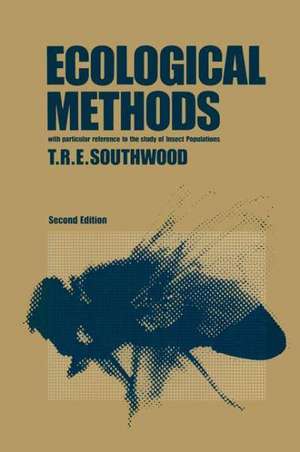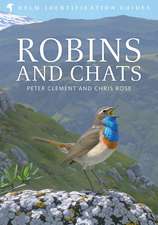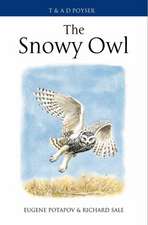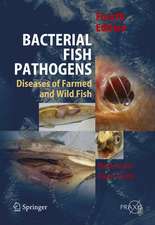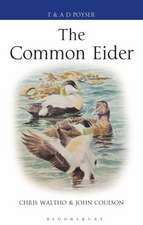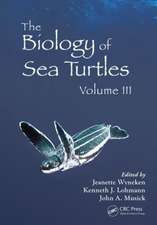Ecological Methods: With Particular Reference to the Study of Insect Populations
Autor T. R. Southwooden Limba Engleză Paperback – noi 2011
| Toate formatele și edițiile | Preț | Express |
|---|---|---|
| Paperback (2) | 402.76 lei 6-8 săpt. | |
| SPRINGER NETHERLANDS – noi 2011 | 402.76 lei 6-8 săpt. | |
| SPRINGER NETHERLANDS – 31 oct 1987 | 902.06 lei 6-8 săpt. |
Preț: 402.76 lei
Nou
Puncte Express: 604
Preț estimativ în valută:
77.07€ • 80.46$ • 63.78£
77.07€ • 80.46$ • 63.78£
Carte tipărită la comandă
Livrare economică 04-18 aprilie
Preluare comenzi: 021 569.72.76
Specificații
ISBN-13: 9789400958111
ISBN-10: 9400958110
Pagini: 552
Ilustrații: XXIV, 524 p.
Dimensiuni: 155 x 235 x 29 mm
Greutate: 0.76 kg
Ediția:Softcover reprint of the original 1st ed. 1978
Editura: SPRINGER NETHERLANDS
Colecția Springer
Locul publicării:Dordrecht, Netherlands
ISBN-10: 9400958110
Pagini: 552
Ilustrații: XXIV, 524 p.
Dimensiuni: 155 x 235 x 29 mm
Greutate: 0.76 kg
Ediția:Softcover reprint of the original 1st ed. 1978
Editura: SPRINGER NETHERLANDS
Colecția Springer
Locul publicării:Dordrecht, Netherlands
Public țintă
ResearchCuprins
1 Introduction to the study of animal populations.- 1.1 POPULATION ESTIMATES.- 1.2 ERRORS AND CONFIDENCE.- 2 The sampling programme and the measurement and description of dispersion.- 2.1 PRELIMINARY SAMPLING.- 2.2 THE SAMPLING PROGRAMME.- 2.3 DISPERSION page.- 2.4 SEQUENTIAL SAMPLING.- 2.5 PRESENCE OR ABSENCE SAMPLING.- 2.6 SAMPLING A FAUNA.- 2.7 BIOLOGICAL AND OTHER QUALITATIVE ASPECTS OF SAMPLING.- 3 Absolute population estimates using marking techniques.- 3.1 METHODS OF MARKING ANIMALS.- 3.2 CAPTURE-RECAPTURE METHODS OF ESTIMATING POPULATION PARAMETERS.- 4 Absolute population estimates by sampling a unit of habitat —air, plants, plant products and vertebrate hosts.- 4.1 SAMPLING FROM THE AIR.- 4.2 SAMPLING FROM PLANTS.- 4.3 SAMPLING FROM VERTEBRATE HOSTS.- 5 Absolute population estimates by sampling a unit of habitat—soil and litter page.- 5.1 SAMPLING.- 5.2 MECHANICAL METHODS OF EXTRACTION.- 5.3 BEHAVIOURAL OR DYNAMIC METHODS.- 5.4 SUMMARY OF THE APPLICABILITY OF THE METHODS.- 6 Absolute population estimates by sampling a unit of habitat — freshwater habitats.- 6.1 OPEN WATER.- 6.2 VEGETATION.- 6.3 BOTTOM FAUNA page.- 7 Relative methods of population measurement and the derivation of absolute estimates.- 7.1 FACTORS AFFECTING THE SIZE OF RELATIVE ESTIMATES.- 7.2 THE USES OF RELATIVE METHODS.- 7.3 RELATIVE METHODS-CATCH PER UNIT EFFORT.- 7.4 RELATIVE METHODS—TRAPPING.- 8 Estimates based on products and effects of insects.- 8.1 PRODUCTS.- 8.2 EFFECTS.- 9 Observational and experimental methods for the estimation of natality, mortality and dispersal.- 9.1 NATALITY.- 9.2 MORTALITY.- 9.3 DISPERSAL.- 10 The construction, description and analysis of age-specific life-tables.- 10.1 TYPES OF LIFE-TABLE AND THE BUDGET.- 10.2 THE CONSTRUCTION OF A BUDGET.- 10.3 THEDESCRIPTION OF BUDGETS AND LIFE-TABLES.- 10.4 THE ANALYSIS OF LIFE-TABLE DATA.- 11 Age-grouping of insects, time-specific life-tables and predictive population models.- 11.1 AGE-GROUPING OF INSECTS.- 11.2 TIME-SPECIFIC LIFE TABLE AND SURVIVAL RATES.- 11.3 PREDICTIVE POPULATION MODELS.- 12 Systems analysis and modelling in ecology.- 12.1 TYPES OF SYSTEMS MODEL.- 12.2 ANALYSIS AND SIMULATION IN MODELS.- 12.3 DETERMINISTIC AND STOCHASTIC MODELS.- 12.4 DIFFERENCE AND DIFFERENTIAL MODELS.- 13 Diversity, species packing and habitat description.- 13.1 DIVERSITY.- 13.2 SPECIES PACKING.- 13.3 HABITATS.- 14 The estimation of productivity and the construction of energy budgets.- 14.1 ESTIMATION OF STANDING CROP.- 14.2 ESTIMATION OF ENERGY FLOW.- 14.3 THE ENERGY BUDGET, EFFICIENCIES AND TRANSFER COEFFICIENTS page.- 14.4 ASSESSMENT OF ENERGY AND TIME COST STRATEGIES.- Author Index.- General Index.
